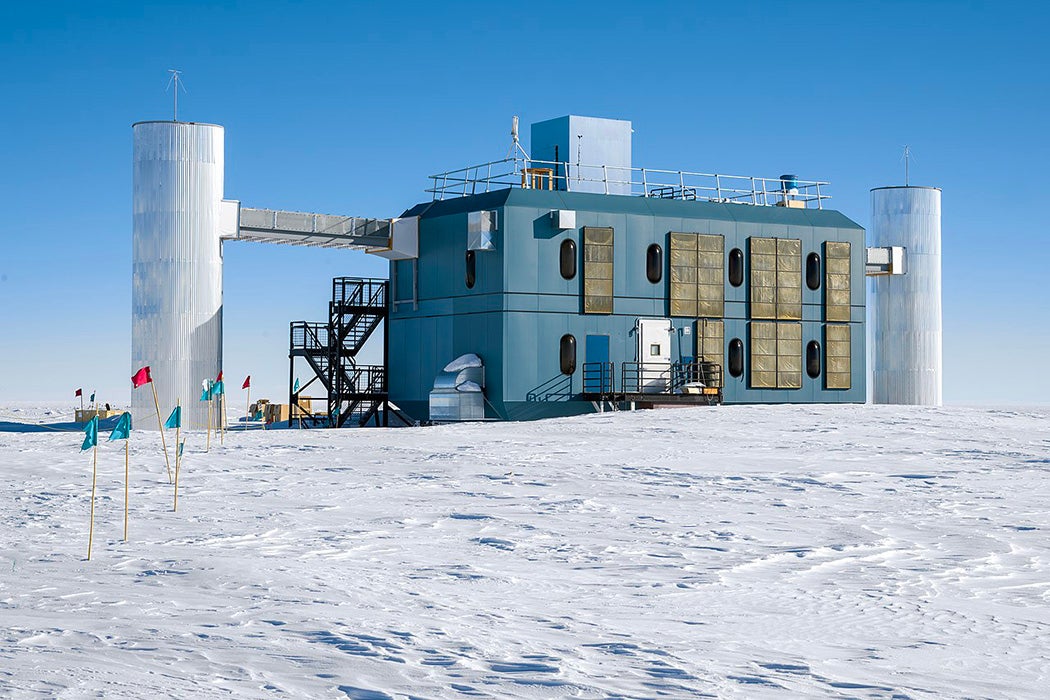Over 2,500 years ago, Greek philosophers debated whether the nature of reality was impermanence or constant change. Heraclitus was the champion of change, pointing to the march of the seasons and the ebb and flow of the tides. In contrast, Parmenides, a near-contemporary of Heraclitus, claimed that change was illusory and constancy was the rule.
Modern physics has found subatomic examples that support both ways of thinking. For example, the electrons found in your atoms have been unchanged since the Universe began, supporting the constancy conjecture. However, in a clear example of constant change, another form of subatomic particles called neutrinos are in continuous flux, literally changing their identity over and over again. While this behavior of neutrinos has been demonstrated in Earthbound laboratories, a recent measurement shows that this behavior also occurs in deep space.
Quantum Ghosts
Neutrinos are often called the ghosts of the quantum world. They interact very weakly with matter, which enables them to pass through our planet with only a tiny probability of interacting. There are three kinds of neutrinos: the electron-type, muon-type, and tau-type. Electron neutrinos are predominantly created in nuclear reactors, while muon neutrinos are created in the Earth’s atmosphere as highly energetic protons from space smash into the air above us. Tau neutrinos are directly created only in giant particle accelerators.
However, in a nod to Parmenides, neutrinos are unique in the quantum world because they can change their identity, converting from one type to another. This identity swapping is called “neutrino oscillation” and it allows electron or muon neutrinos to change into tau neutrinos, and vice versa. The creation of tau neutrinos was observed in the laboratory for the first time in 2000 at Fermi National Accelerator Laboratory, located just outside Chicago.
Because neutrinos have very low mass compared to other subatomic particles, they travel at near the speed of light. So, in the time it takes for neutrinos to oscillate, they can travel considerable distances from where they were created. Although the transformation of electron and muon neutrinos into tau neutrinos has been observed in detectors using particle accelerators, tau neutrinos created as they traveled over cosmic distances had not been observed before the recent achievement.
Detecting Neutrino Transformation
The IceCube detector uses a cubic kilometer of ice near the Earth’s south pole to study neutrinos. Installation of the facility began in 2005 and it was completed in 2010 and it’s been in continuous operation since. The huge size of the detector is necessary because neutrinos interact so weakly. Despite something like 100 trillion neutrinos passing through you every second, in your entire life perhaps only one neutrino will interact in your body. Thus, a large detector is necessary to detect a significant number of neutrino interactions.
The IceCube detector has had a significant number of successes. In 2013, IceCube researchers detected neutrinos originating outside the Solar System, and in 2019 tau neutrinos were detected in the apparatus. These tau neutrinos had oscillated from electron and muon neutrinos created in the Earth’s atmosphere from cosmic rays. And, in 2018, IceCube scientists identified a high-energy neutrino that originated from a supermassive black hole located about six billion lightyears away from Earth. This was the first time a neutrino generated in deep space could be accurately pointed back to its source.
In the most recent measurement, IceCube researchers were able to detect and isolate seven tau neutrinos, all of which had very high energy, ranging from 20 trillion electron volts of energy up to a quadrillion electron volts. (To give a sense of scale, the highest energy particle accelerator on Earth can accelerate protons to an energy of 6.5 trillion electron volts.)
Given the very high energy of the observed tau neutrinos, it is entirely likely that these neutrinos were created at cosmic distances in violent events, like the collision of neutron stars or in the accretion disk surrounding black holes. The neutrinos probably began their journey as electron or muon neutrinos and oscillated into tau neutrinos shortly before hitting the Earth’s atmosphere.
Weekly Newsletter
Tau neutrinos are extremely difficult to isolate, as the signature they leave in a detector is often nearly indistinguishable from the signal left by electron and muon neutrinos. To identify tau neutrinos, the scientists used a form of machine learning called convolutional neural networks (CNNs), which use three-dimensional information to identify objects.
Large detectors like IceCube provide scientists the ability to study both interstellar and extragalactic sources of neutrinos. The IceCube collaboration has proposed an enlargement of their detector, which would increase the detector volume from a single cubic kilometer to ten cubic kilometers. And, in 2019, the National Science Foundation approved a more modest upgrade, which will allow IceCube scientists to study lower-energy neutrinos.
This observation of tau neutrinos provides yet another powerful affirmation of the capabilities of the IceCube detector and sets the stage for future research.







